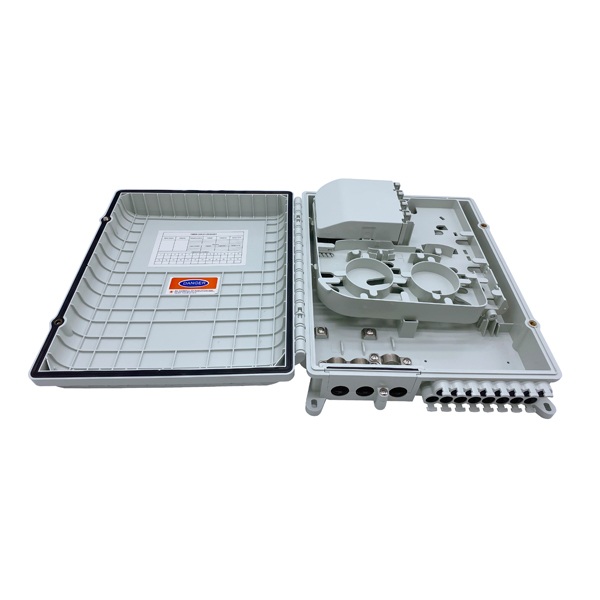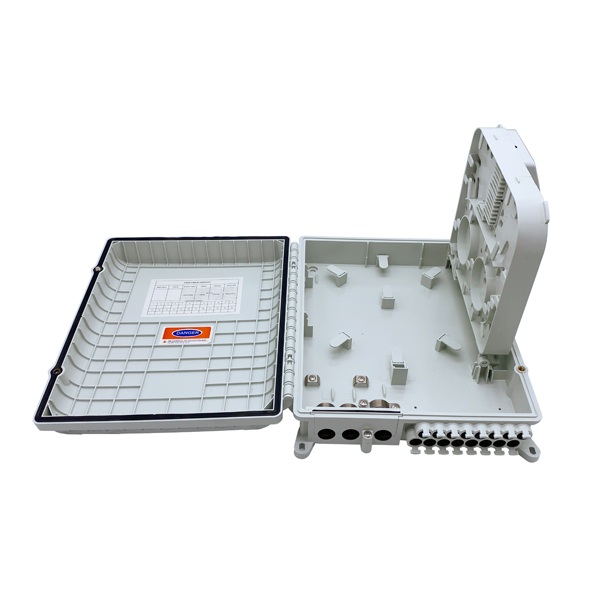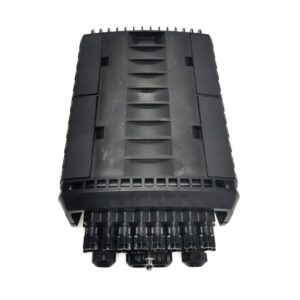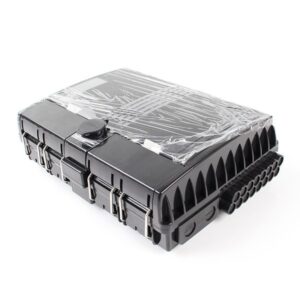Description
Features of Outdoor Cable Distribution Box
- Total enclosed structure with key and buckles
- High strength engineer plastic, wet-proof, water-proof, dust-proof, anti-aging, Resistance to chemical and U.V attack.
- Clamping for feeder cable and drop cable, fiber splicing, fixation, storage, distribution, etc. all in one.
- Cable, pigtails, patch cords are running through own path without disturbing each other, cassette type SC adaptor installation, easy maintenance.
- Distribution panel can be flipped up, feeder cable can be placed by expression port, easy for maintenance and installation.
- Outdoor Wall mount or pole mount, IP65
Specification
| Model | FDB0316L-A | FDB0316L-C |
| Dimension (A*B*C) | 327*258*88mm, D*E/F*G(mm):150.5*130/312*230mm | |
| Max. Capacity | 16 cores (single fiber) | |
| Cable ports | 3mid span, 16out | |
| Cable diameter | In:φ16mm; out:2*φ3mm | |
| Splitter quantity | 1×16 or 2pc 1×8 steel tube | 2pcs 1*8 LGX module |
| Adapter quantity | 16SC | — |
| Color | Grey / black | |
| Waterproof grade | IP65 | |
| Material | PC+ABS | |
Detailed Display of Outdoor Cable Distribution Box
The box has a rectangular shape with a robust and compact design. It is equipped with stable mounting feet or brackets, enabling secure installation on walls, poles, or other outdoor structures. Made of high-quality, durable plastic material, the box is weather-resistant, dust-proof, and capable of withstanding various harsh outdoor environments such as rain, sun, and temperature fluctuations.
There are multiple cable ports on different sides of the box. These ports come with protective caps or gaskets to ensure sealing and prevent water and dust from entering. The ports are designed to accommodate different sizes and types of optical fiber cables. As shown in the enlarged details and open-box views, the interior includes fiber splicing trays, adapters, and management modules. The splicing trays provide a space for fiber optic splicing and protection. The adapters allow for the connection of different optical fibers, facilitating the distribution and branching of optical signals.

The internal structure is well-organized, with grooves and holders for neatly arranging optical fibers, avoiding tangling and ensuring smooth signal transmission. Inside the box, there are areas for labeling, which helps in identifying different fiber optic circuits and facilitating maintenance and management.











